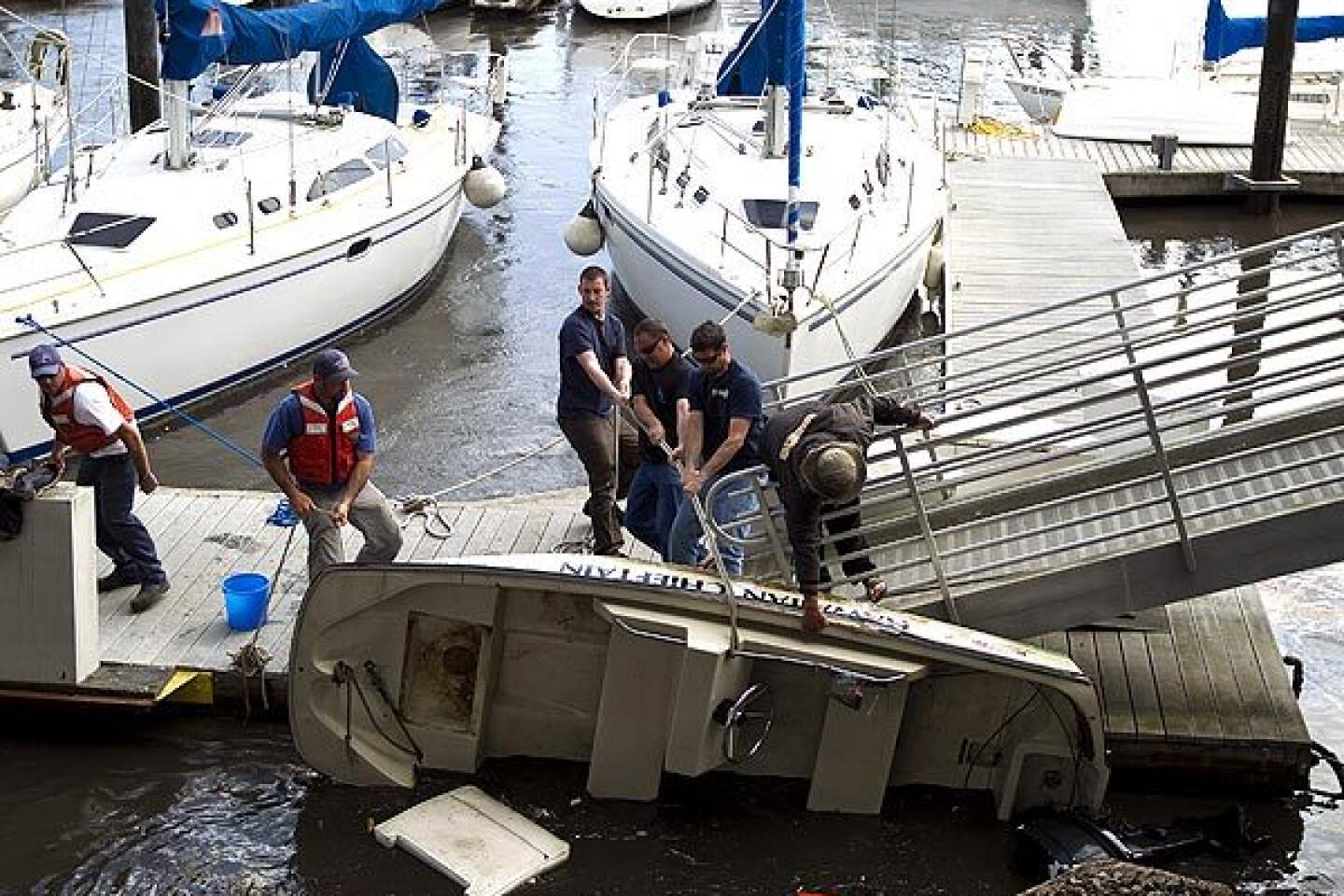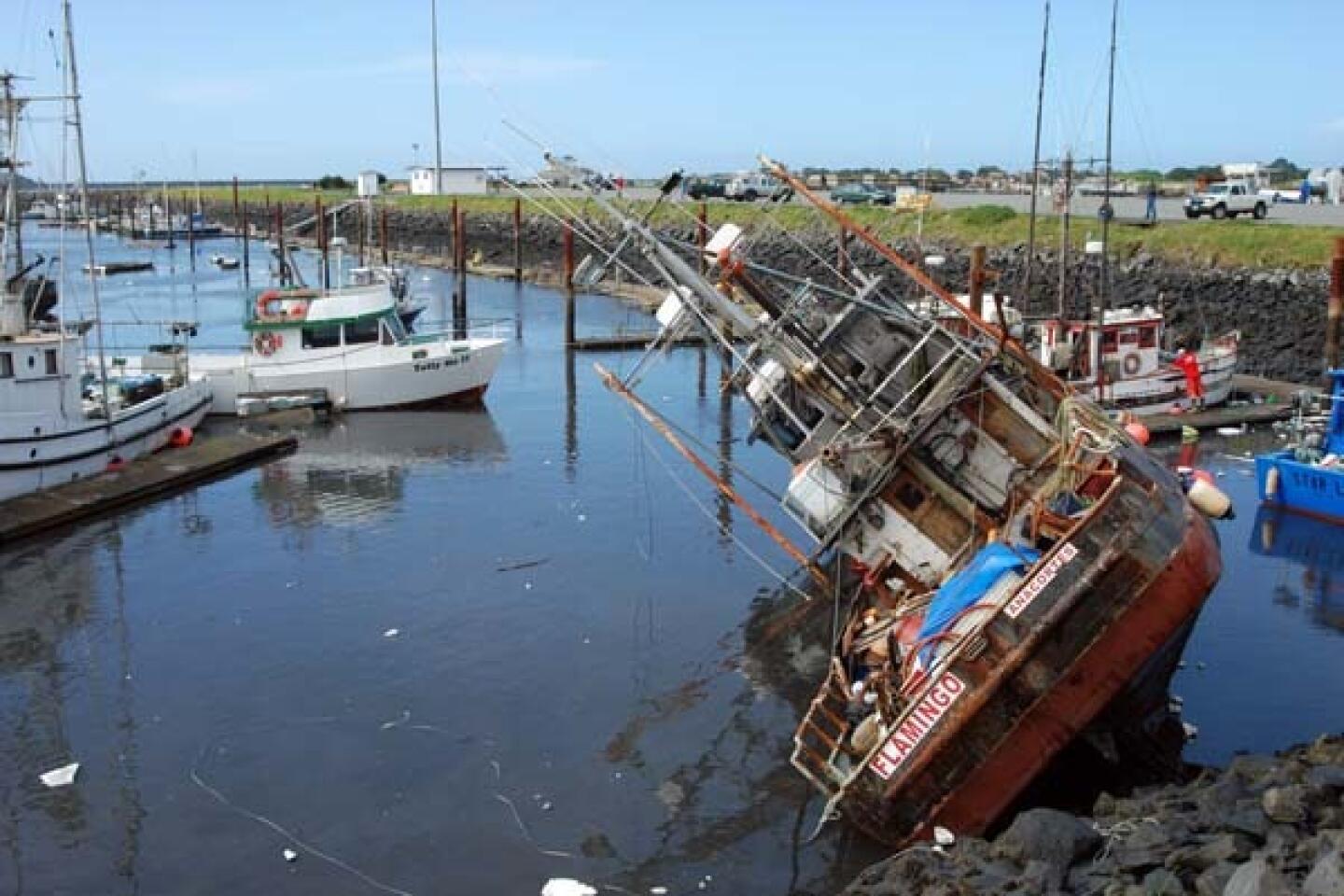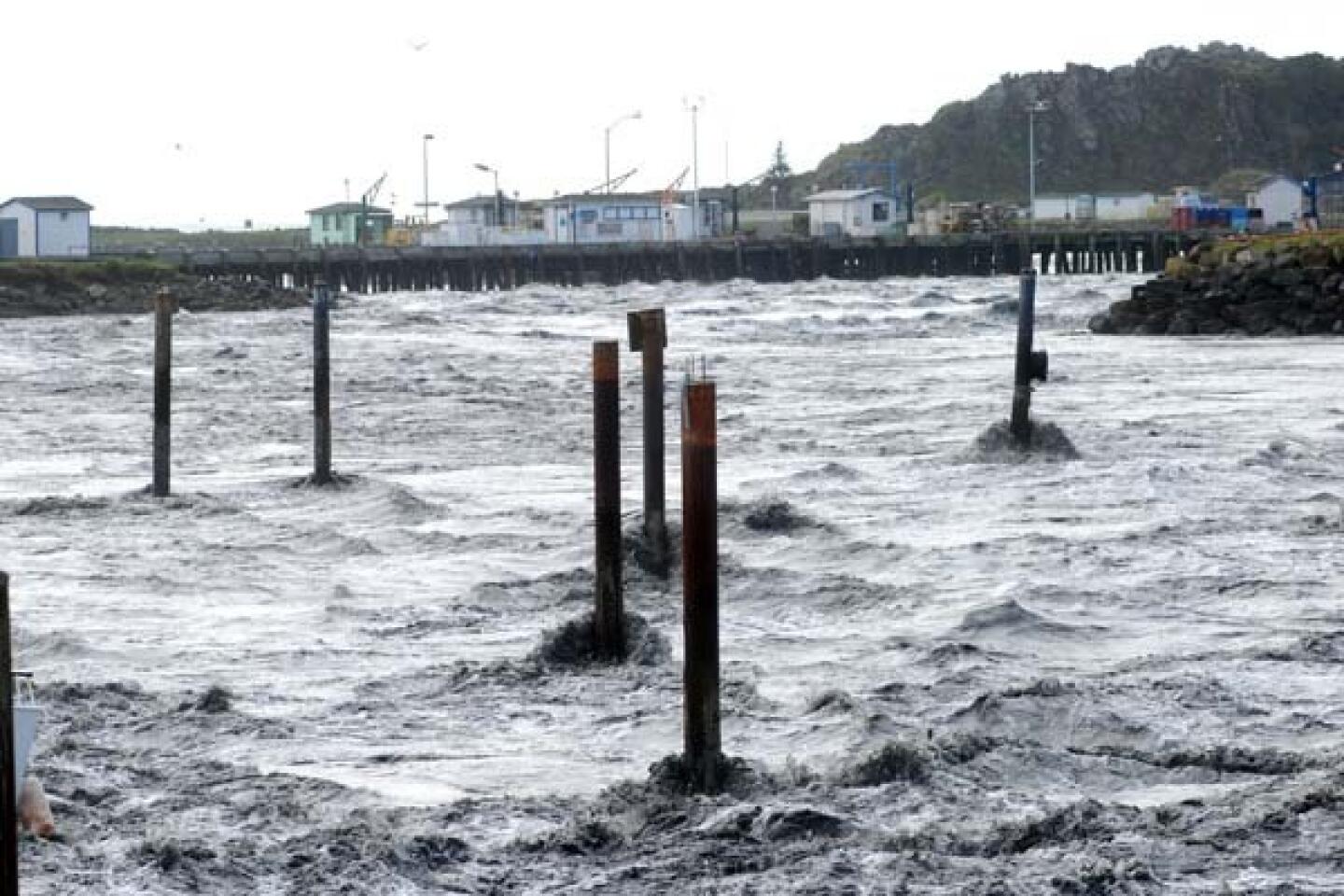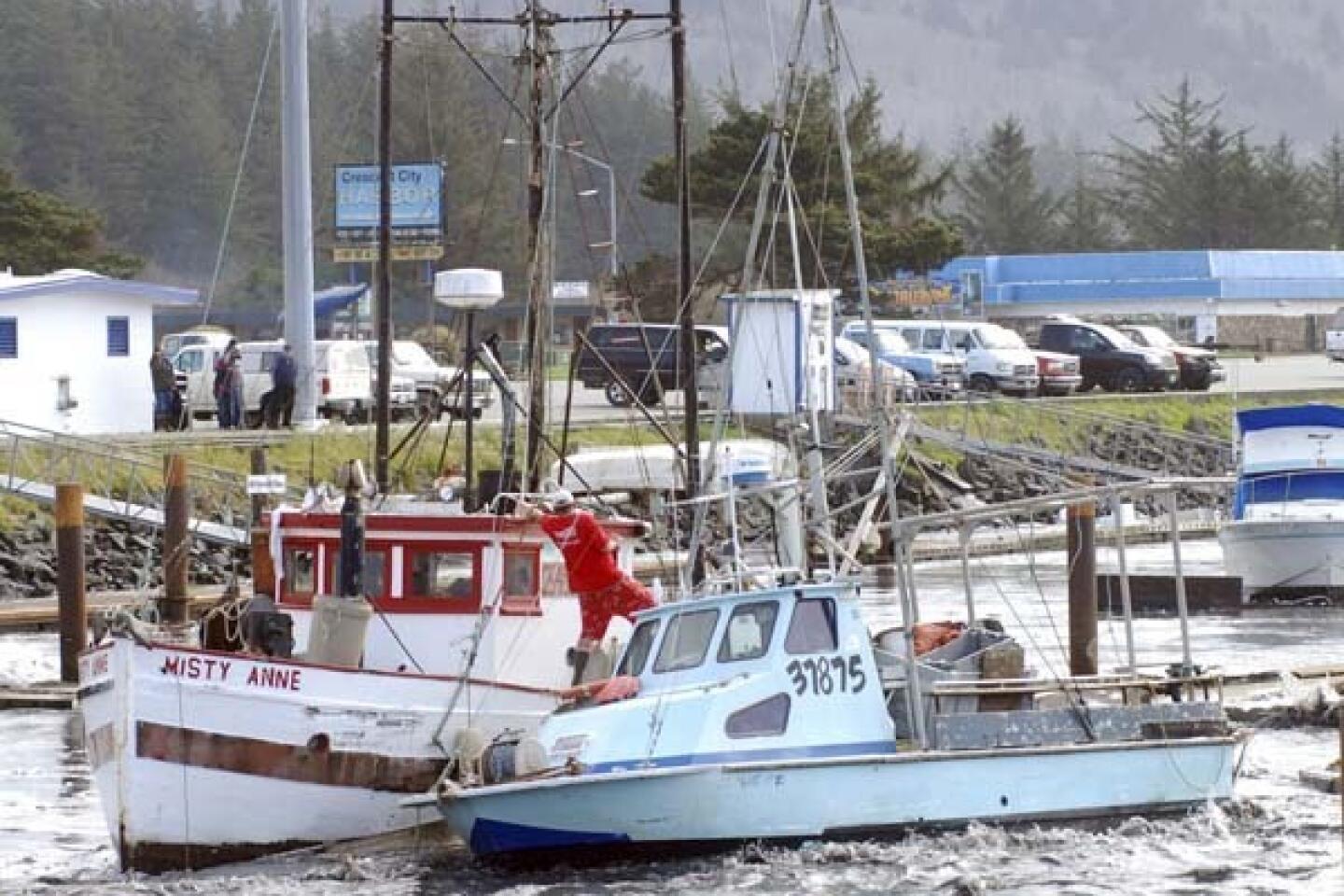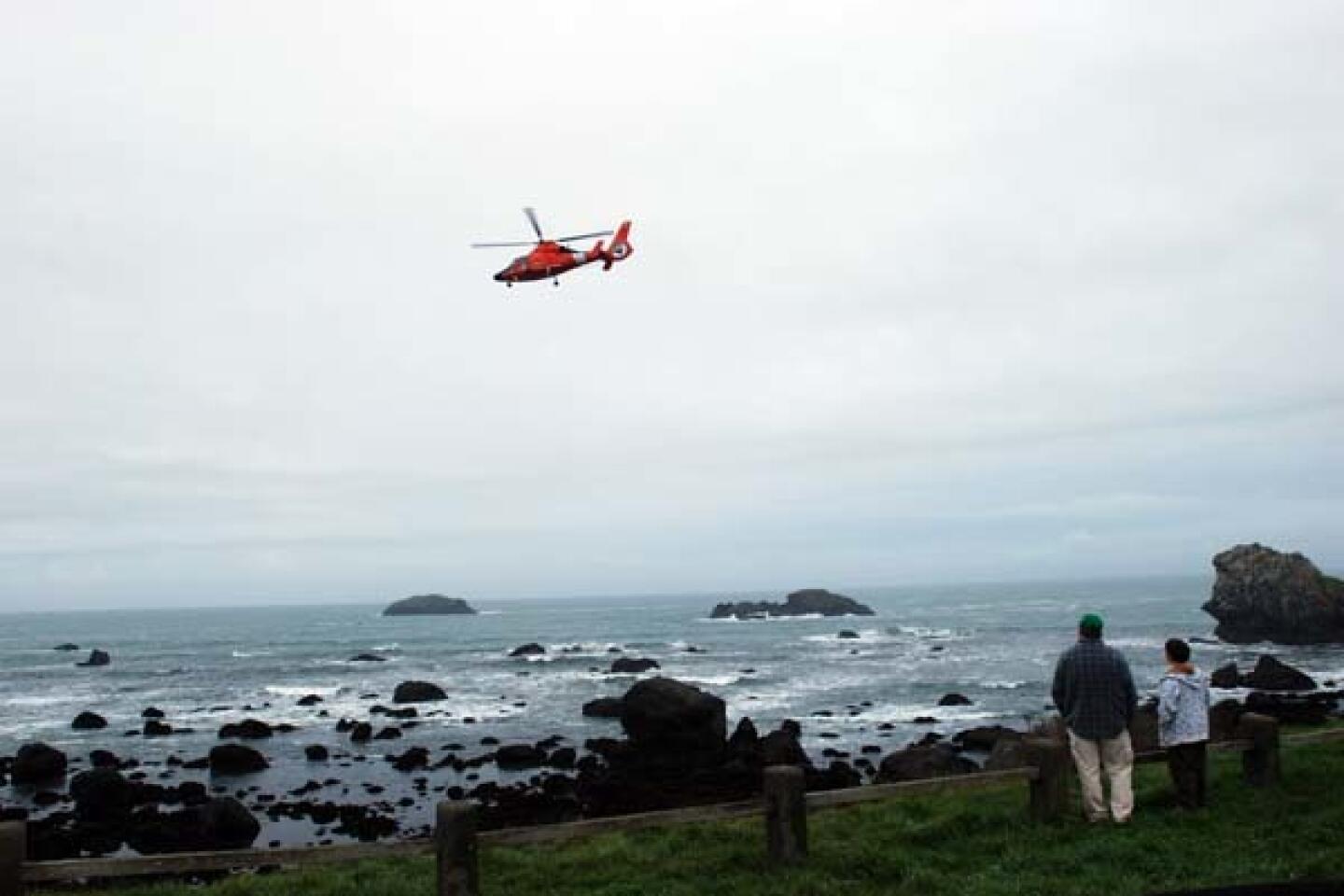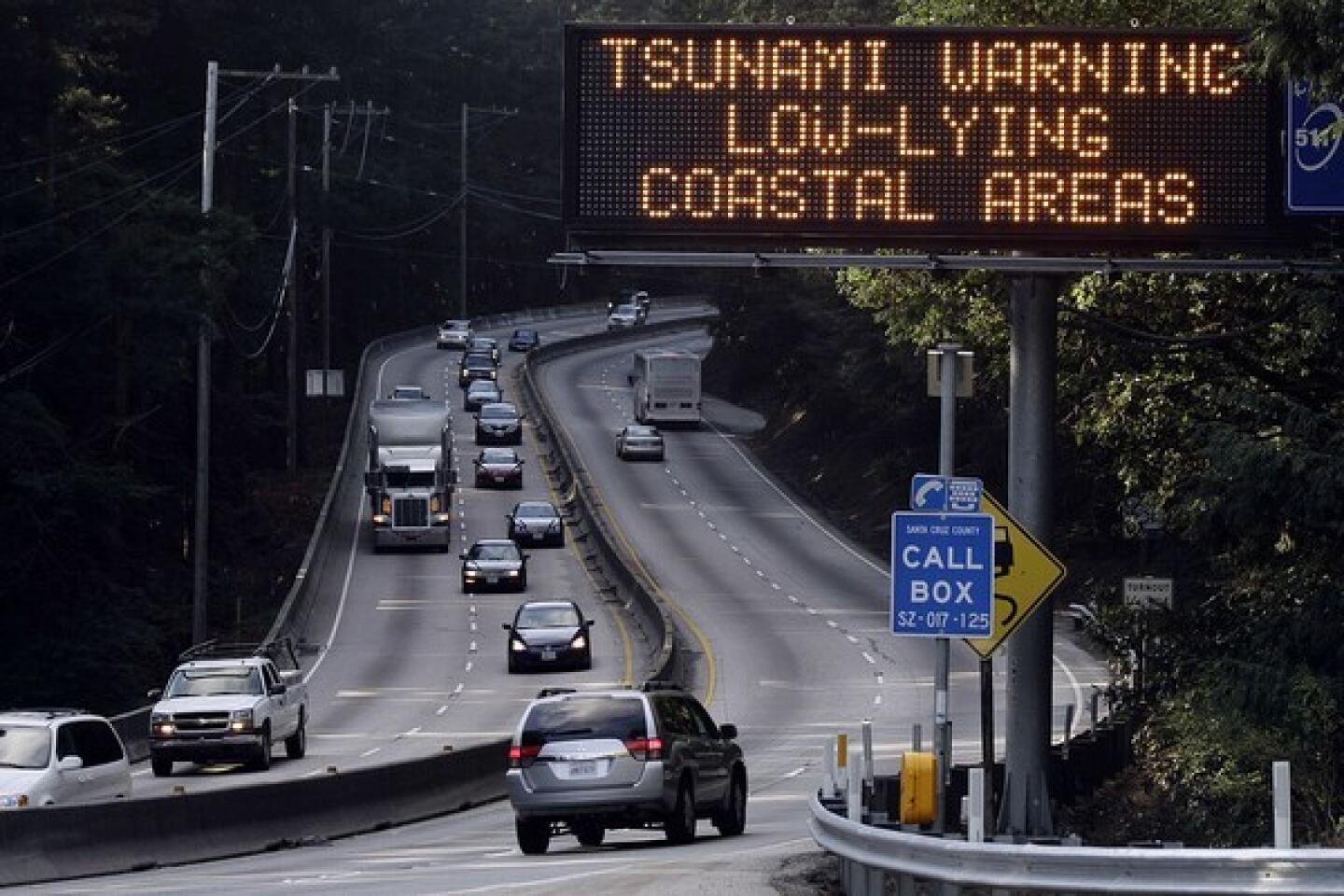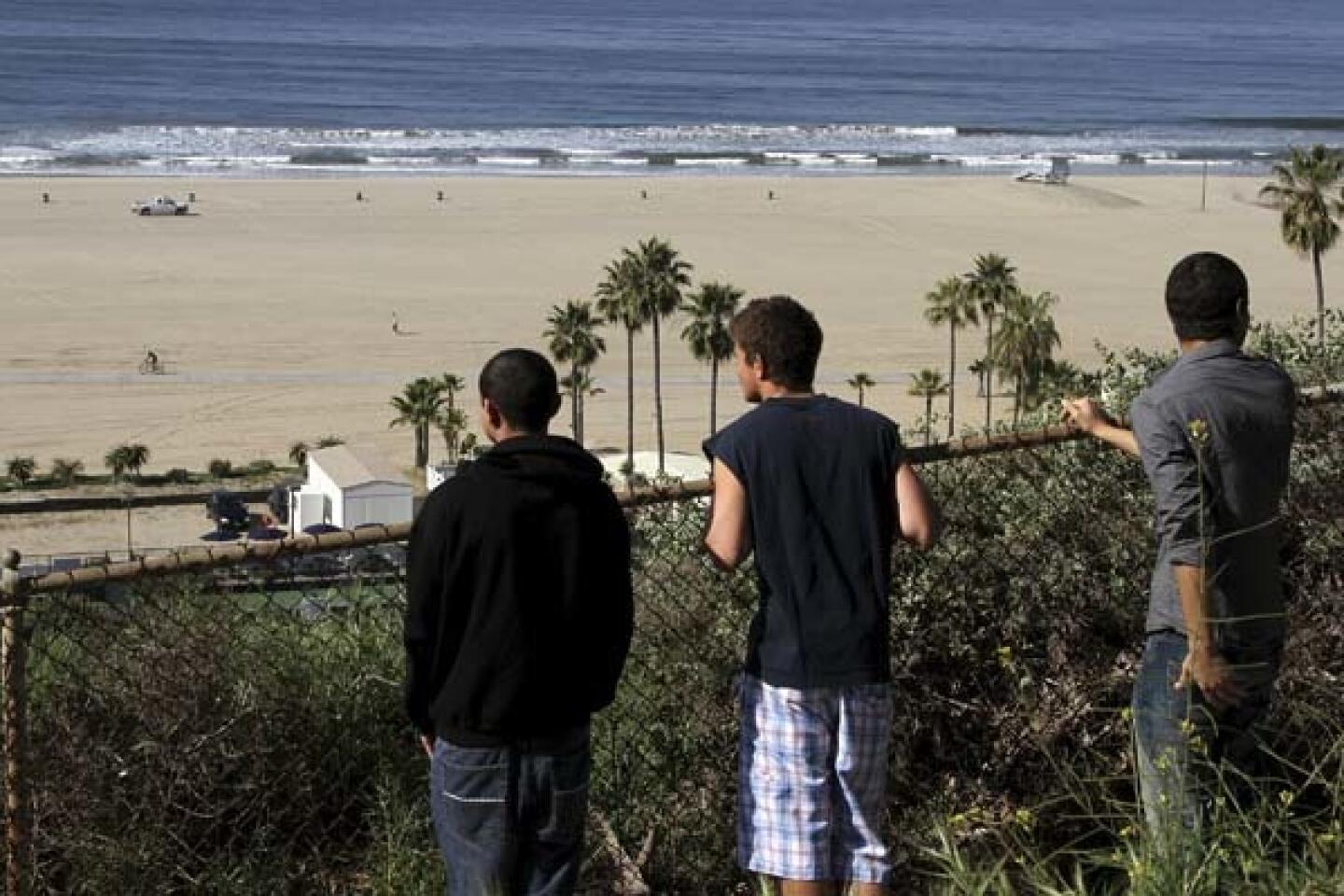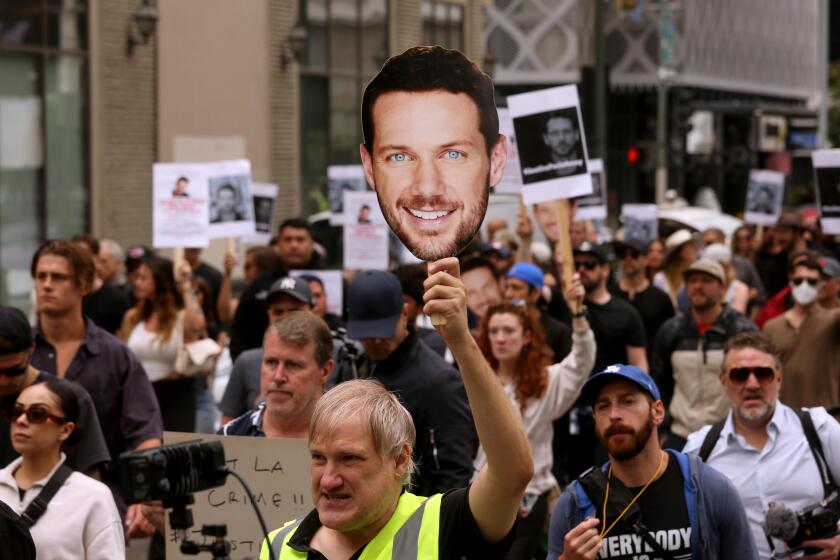Crescent City comes to grips with tsunami’s devastation
Reporting from Crescent City, Calif. — The day after a tsunami destroyed this beleaguered city’s fishing harbor and battered the economy along with it, the sky here on the wild Northern California coast struggled to brighten. Rain pelted the debris-strewn harbor. Winds whipped through the redwoods.
And still the cars came, headlights glowing, passengers craning to see boats upended like toys. Most of the region’s emergency staff had been working nonstop since the giant waves were first predicted, and the city was hard-pressed to stop a steady parade of gawkers.
Twenty-four hours earlier, in the wake of Japan’s magnitude 8.9 earthquake, Crescent City had largely emptied, anticipating disaster. On Saturday morning, as the crushing waves subsided, residents and officials took stock.
Photos: Tsunami surge damages Crescent City harbor
“We’re facing not only physical but financial disaster,” harbormaster Richard Young told residents and elected officials during an early briefing. “Our business activity came to a screeching halt yesterday, and that affects the entire community.”
Although harbors up and down the coast were damaged in the tsunami, officials say only one person died in California as a direct result, a young man taking pictures of the surging waves at the mouth of the Klamath River. On Saturday morning, Del Norte County Sheriff Cmdr. Bill Steven identified the dead man as Dustin Weber, 25, believed to be from Bend, Ore.
But the city struggled with conflicting emotions Saturday: relief that the damage wasn’t greater, survivor’s guilt (“Those poor people in Japan!” was a common refrain), pride that disaster planning had paid off and fear of the economic hit and looming reconstruction.
“Despite all we did to mitigate the problems,” Young told his somber audience at the county administrative offices, “the harbor is destroyed.”
Volunteers had knocked on doors for hours in advance of the tsunami, evacuating people on boats and in houses in the city’s tsunami zone. Three shelters were activated. A child-care center for volunteers opened its doors at 2 a.m. Friday. An hour or so later, there was a shelter for animals.
The majority of the harbor’s fishing boats had sailed to safety, warned that waves could have reached heights rivaling the 1964 tsunami, which killed 11, destroyed the harbor and leveled a large swath of downtown. On Saturday morning, the remaining vessels listed in the churning harbor. At least eight had sunk. A sheen of oil coated the water.
The city rebuilt after the ’64 waves, but in 2006, a tsunami generated by an earthquake in Japan damaged the harbor again. Reconstruction — with a $20-million price tag — was in the works when the latest disaster hit, wiping out what Young called the “bridge” harbor that had allowed the fishing industry to continue over the last five years.
“There are no serviceable docks in the harbor,” Young said. “The majority of our business fleet went to Eureka. They’re not coming back soon. We need some help soon.... We don’t have a fishing industry in Del Norte County this morning.”
‘Tsunami magnet’
Lori Dengler is holding court at her favorite Mexican restaurant, Los Compadres, across California 101 from the thrashed harbor. With the detritus of a chili relleno lunch at her elbow, Dengler gives a mini seminar on “Crescent City, Tsunami Magnet,” preps for an official afternoon briefing, fields media calls from near and far and tucks stray wisps of red-brown hair behind her ears.
Dengler, the director of the Humboldt Earthquake Education Center, is someone people in these parts consider the rare expert on their hazardous home. And hazardous it is.
Friday’s disaster, the Humboldt State University professor figures, was the 34th or 35th tsunami to hit Crescent City in the last 78 years. The geology professor has published repeatedly on the ubiquitous waves, which adorn the official city seal, give businesses their names (Tsunami Sports Bar and Grill. Big Wave Barber Shop. Tsunami Lanes) and occasionally devastate the local economy.
On this drizzly afternoon, she is calling up Google Earth maps on her iPhone and pointing out the region’s geographical perils with a ragged-nailed finger.
“I have five reasons why Crescent City is a tsunami magnet,” she begins. “No. 1 has to do with simple exposure…. This is one of the few cities in California that’s extremely exposed — low elevation and jutting out into the ocean.”
No. 2 is the shape of the ocean floor off its rocky coast. No. 3 is the bowl shape of the Continental Shelf, “which causes the tsunami energy to get trapped and start oscillating back and forth in a complex way.”
That’s why, she says, it’s not the first wave that hits hardest, or even the second. Wait an hour or so and you’ll really be in trouble as the shifting surges build on one another. Reason No. 4 is the harbor’s orientation. Tsunami waves get trapped in the small south-facing harbor and continue to oscillate.
No. 5 is the city’s own darn fault. When engineers rebuilt after the devastating 1964 tsunami, which old-timers still recount with awe, they decided to erect a sea wall to protect the fishing fleet from the weather. It works fine in normal weather, but in tsunamis, the very small harbor entrance traps the waves and they churn even harder. On Saturday, the normally glassy harbor boiled with strong currents in the tsunami’s aftermath.
“After the ’64 recovery, they didn’t have the modeling we do now,” she says as her phone rings and she prepares to leave. “They made the small harbor more vulnerable.... It’s like taking a high-strung person and giving them amphetamines.”
‘Upside down’
Martha McClure was in sixth or seventh grade when the big one hit back in 1964, generated by the Great Alaskan Earthquake. “Tidal Waves Kill 10 in Crescent City,” screamed one headline. And “15 Others Missing as Town Becomes Scene of Horror.” And “Crescent City Disaster.”
“My mom said, ‘Let’s go see,’” she recounted, “and we all got in the car.”
McClure said her lookie-loo family made it home before the biggest wave hit. “It was overwhelming and frightening … for a child to see her community be upside down.”
Photos: Tsunami surge damages Crescent City harbor
Saturday the view was just as painful for the grown-up McClure, now a county supervisor touring the devastation with state officials, hoping for emergency assistance. She stared out at the ruined harbor, docks swept away, naked pilings poking up like toothpicks, a trailer that once housed a crab restaurant teetering on the rocks.
One fishing boat, The American Maid, was half submerged, wedged underneath the CherylAnn. The Beautiful belied its name. The Ingot floated forlornly three or four docks over from where it was moored a day earlier. Big chunks of Styrofoam littered the rocks.
“We don’t have the financial resources,” she said, shaking her head. “We need money. That’s what it takes to fix things…. Our poor little harbor.”
More to Read
Sign up for Essential California
The most important California stories and recommendations in your inbox every morning.
You may occasionally receive promotional content from the Los Angeles Times.
